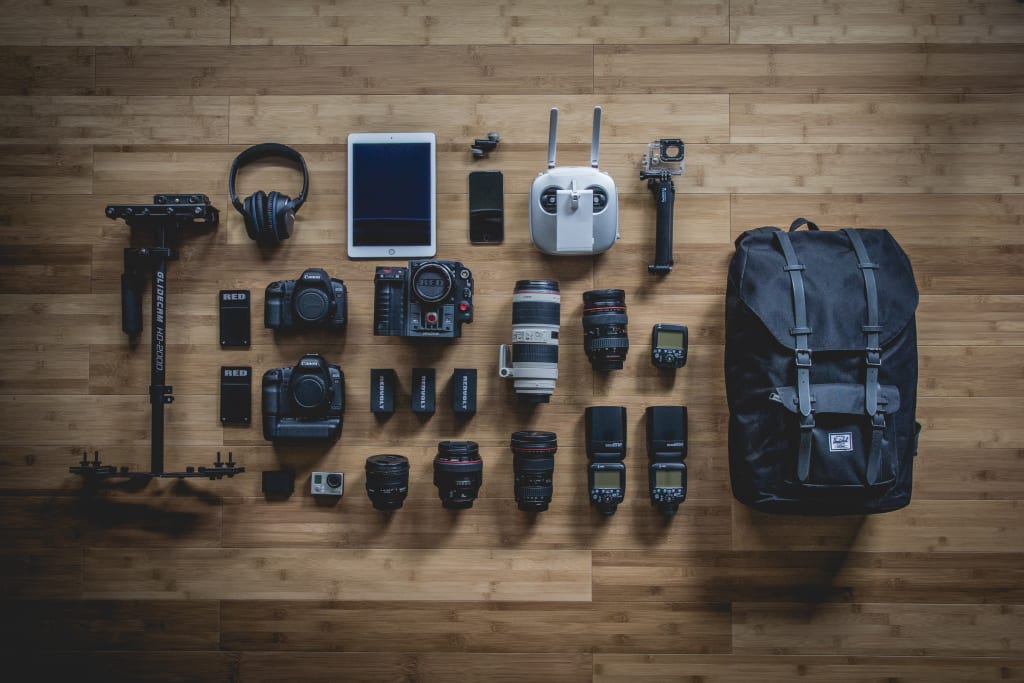How to Choose the Right Lens for Your Camera
This is the basic information you need to choose the right lens for your camera, no matter what you're photographing.

Once you graduate from the (admittedly decent) camera on your iPhone in favor of a high quality interchangeable lens camera, you open up a whole new world of possibilities. Most cameras come with a mid-range adjustable lens (also known as a "zoom lens") for general use, but the best way to take full advantage of your newfound photographic strength is to purchase specialized lenses that are optimized for your particular needs. That how you master your lenses. Firstly, you'll want to pay attention to the lens mount, which determines which camera bodies a particular lens can attach too. Most camera companies produce proprietary lenses for their own cameras, but there are also some modular third party options.
Once you've determined the appropriate lenses and camera bodies for your set up, the next most important aspects you'll want to pay attention to are the focal length and maximum aperture of the lenses. Focal length and maximum aperture determine the field of view and lighting of your photos, and thus have a profound impact on your overall image quality. It's important for you to understand the various types of lens' focal length/aperture combinations in order to determine which setup will work best for your needs.
The exact measurements you want will depend on what sort of photography you're interested in. Portrait-style and other close-up photography requires a moderate focal length and a high aperture, while sports photography demands a much higher focal length. Event and wedding photography can require a broad range of focal lengths, making adjustable lenses particularly ideal. No matter what you'll be using your camera for, this guide will give you the info you need to choose the right lens for your camera. We will focus on two vastly different styles of photography—portraits and sports—in order to illustrate the differences in equipment you'll need for particular photography assignments.
What are focal length and maximum aperture?
Before we delve too far into what it takes to choose the right lens for your camera, there is some terminology we should get out of the way. There is a broad variety of unique features to consider when purchasing a new camera lens, but we'll keep things simple by focusing on two specific measurements: focal length and maximum aperture. Arguably the two most important characteristics to look for when buying a new lens, focal length and maximum aperture refer respectively to how much "zoom" the lens has and the amount of light it lets in.
The focal length of the human eye, for example, is typically the equivalent of a 50mm focal length. A lower focal length like 18mm or 28mm will allow you to take a much wider shot, while a higher focal length like 80mm or 200mm will provide a much more focused field of view. Many modern lenses are adjustable, meaning their focal length is actually a range like 28-80mm or 70-200mm. As the name implies, these lenses can be adjusted to take photos at any focal length in that range. If you don't have a zoom lens, you'll have to physically move closer to or farther away from your target in order to adjust the frame of reference.
Because the maximum aperture relates to the amount of light the lens can gather, you'll typically need to adjust it based on the light characteristics of the environment you're shooting in. For example, an f/1.2 aperture lets in quite a lot of light, reducing the need to use a flash. On the opposite end of the spectrum, something like f/20 is not able to use as much light, and is not as effective in low-light situations without flash. (You'll notice the smaller numbers counterintuitively correspond with larger maximum apertures.)
The other result of different aperture sizes is differences in depth of field. Depth of field refers to the part of a photograph that is in focus. A large maximum aperture like f/1.2 can provide a shallower depth of field, meaning it can focus in on a smaller part of the photograph, while a smaller maximum aperture like f/20 results in a more uniformly focused image. Adjustable apertures aren't really a thing, but you may find some adjustable lenses offering a maximum aperture that adjusts depending on which focal length you're using. For example, a lens that is 70-200mm, f/2.8-5.6 will have a maximum aperture of f/2.8 at 70mm and f/5.6 at 200mm.
Portraits and Other Close-Up Photography

Photo by Alexander Dummer on Unsplash
One of the most common needs of a freelance photographer is a good lens for taking portraits. Even if you're an amateur, it's easy to make some side-money taking headshot photos for your peers, making it worth it to choose the right lens for your camera to take great portrait photographs. One advantage of taking portraits is that your target is generally standing still, allowing you to move around to find the exact angle and distance for the perfect photograph. For this reason, a zoom lens is not necessary.
As far the best lenses for portrait photography in terms of focal length, you'll want something close to eye-level, around 50mm so as not to distort your target's facial features. Some photographers prefer to kick the focal length up to 70-84mm in order to focus in on the subject, especially if you'll mostly be photographing the head and shoulders. Keep in mind a lower focal length means you'll have to get closer to the subject if you want a more focused photo, so be wary of anything below 50mm if you want to avoid standing awkwardly close to the person you're taking photos of. Lenses with focal lengths smaller than the 30-50mm range are known as wide angle lenses, which can start to produce a sort of fisheye effect. Wide angle lenses are generally not recommended for portraits; they are more effective at photographing landscapes and panoramas. There are some great Fujifilm lenses for landscape photography out there.
When it comes to maximum aperture, portraits are one area where you want just about the biggest possible rating. Lenses in the 50-84mm range tend to have maximum apertures around f/1.4, which is perfect for providing a focused depth of field, which will blur out the background and keep your subject's face the sole focus of the photo.
Sports Photography

Photo by Geoff Scott on Unsplash
If you find yourself needing to take photos of sporting events or similar activities, the requirements are just about the opposite of what you need for taking portraits. This means you should look for a lower maximum aperture and a much higher focal length if you want to choose the right lens for your camera to handle sports photography. When you're shopping around, you have many choices depending on what kind of sport it is, where you'll be shooting from, and what kind of photos you want to produce.
While adjustable lenses can offer you flexibility in taking a variety of photos from different angles and fields of view, the image quality of the resulting photograph declines somewhat. This sacrifice may or may not be worth it to you—again, it depends on what your personal needs are. A lens with a fixed focal length (also known as a prime lens) provides that sharpness, but you should expect to be moving around a lot, as you'll constantly have to be active in order to follow the action on the field (or court, etc. as the case may be), which can bring new issues like camera shake into play.
Regardless if you choose to purchase a fixed or adjustable focal length lens, you'll want something with at least a 100mm focal length. Anything less then that, and your field of view will be too unfocused to get a clear, up-close image of the activity on the field. Somewhere in the 100-200mm range should be sufficient for something like a basketball game. If you're photographing something on a much larger scale, such as a football field, you may need something as high as 400mm in order to capture activity anywhere on the massive playing surface.
When it comes to maximum aperture, sports photography can get very tricky. While a moderately high maximum aperture like f/2.8 is sufficient for most sports photography, it can get very expensive very fast if you want a high maximum aperture and a high focal length. In more reasonable price ranges, maximum apertures closer to f/4 are more common for 200mm lenses. This rating is perfectly sufficient if you're photographing daytime events or if it's a well-lit indoor sport like basketball, but you will begin to have issues in low-light conditions, such as a late-night football game.
About the Creator
Joseph D. N. Kendrick
Writer of words. Haver of cats. joeykendrick.com






Comments
There are no comments for this story
Be the first to respond and start the conversation.